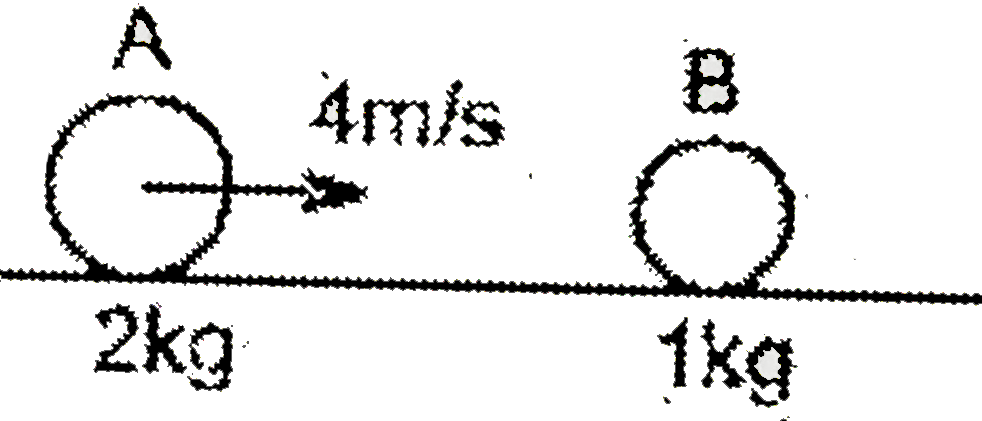Is it possible to have a collision in which the whole of KE is lost?
Yes. For example, in perfectly inelastic collision of two bodies moving towards each other with equal linear momenta.
Topper's Solved these Questions
- BOOK - PRADEEPCHAPTER - WORK, ENERGY AND POWEREXERCISE - Short Answer Question52videos
WORK, ENERGY AND POWER
- BOOK - PRADEEPCHAPTER - WORK, ENERGY AND POWEREXERCISE - Long Answer Question24videos
WORK, ENERGY AND POWER
- BOOK - PRADEEPCHAPTER - WORK, ENERGY AND POWEREXERCISE - Conceptual Problems27videos
WORK, ENERGY AND POWER
- BOOK - PRADEEPCHAPTER - THERMODYNAMICSEXERCISE - Assertion- Reason Type Questions19videos
THERMODYNAMICS
Similar Questions
It is possible to have a triangle in which two of the angles are obtuse.
View SolutionIt is possible to have a triangle in which two angles are acute.
View SolutionIt is possible to have a triangle in which two of the angles are right angles
View SolutionIt is possible to have a triangle in which each angle is equal to 60°.
View SolutionIn any perfectly inelastic collision, is whole of KE lost ?
View SolutionDiscuss the possibility of a particular type of collision ini which the particles have more kinetic energy after the collision than before. It is known as super elastic collision. Will momentum remain conserved in such a collision
View SolutionWhile dealing with collision between particles, you must have deal from and Inertial reference frame Often we choose that frame to be fixed in the Laboratary in which the collision is observed. So it is called the Laboratary reference frame or Lab frame From Lab frame we define an elastic collision as a collision in which KE before and after collision is conserved and a perfectly inelastic collision as a collision in which after collision the two colliding bodies have same velocity vector along the line of action of impulse during collision.
If we discusss the head-on collsion between two particles from center of mass reference frame, then the velocity of center of mass (CM) will be taken to be zero in any type of collision i.e. velocity of CM before and after collision will both be zero. Since before collsion velocity of CM was zero (as our frame is fixed to CM) and no external impulse acts, it will remain zero forever
If collision were elastic in above question then velocity of B after collision in CM reference frame will be:View SolutionWhile dealing with collision between particles, you must have deal from and Inertial reference frame Often we choose that frame to be fixed in the Laboratary in which the collision is observed. So it is called the Laboratary reference frame or Lab frame From Lab frame we define an elastic collision as a collision in which KE before and after collision is conserved and a perfectly inelastic collision as a collision in which after collision the two colliding bodies have same velocity vector along the line of action of impulse during collision.
If we discusss the head-on collsion between two particles from center of mass reference frame, then the velocity of center of mass (CM) will be taken to be zero in any type of collision i.e. velocity of CM before and after collision will both be zero. Since before collsion velocity of CM was zero (as our frame is fixed to CM) and no external impulse acts, it will remain zero forever
Two particles of mass 2 kg and 1kg as shown in the figure make a perfectly inelastic collision. Then if we are dealing with center of mass reference frame, the velocity of B before collision is:
 View Solution
View SolutionIf two objects collide and one is initially at rest (a) is it possible for both to be at rest after collision ? (b) is it possible for any one to be at rest after collision.?
View SolutionTwo particles of masses 0.5 kg and 0.25kg moving with velocity 4.0 m/s and -3.0m/ collide head on in a perfectly inelastic collision. Find the velocity of the composite particle after collision and KE lost in the collision.
View Solution

